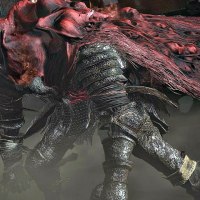“Ant-Man” has never been one of Marvel’s heavy hitters, but Paul Rudd’s depiction of the Scott Lang version of the character has gained fan appeal especially in studio’s team-up films like “Captain America: Civil War” and “Avengers: Endgame.”
The “Ant-Man” franchise remains to be an anomaly, now that it has completed a trilogy. The first “Ant-Man” film was painfully average and ultimately represents wasted potential, especially considering that Marvel initially had director Edgar Wright at the helm. But it came too early in Marvel’s phases — a Wright-directed film in Phase 3 or even Phase 4, for instance, would have likely been welcomed with open arms by fans, but not necessarily at that point (2015), when the cinematic universe was still fresh off the heels of “Avengers: Age of Ultron.” Its sequel, “Ant-Man and the Wasp” was a much-needed upgrade as it leaned on Rudd’s comedic chops and it works as one if the better MCU films during the “Infinity Saga.” Yet it is indisputable that this franchise is propped up by the juggernaut MCU — I don’t think there is any way a standalone “Ant-Man” trilogy would have made it to film three without the deep cinematic universe connections the one we now have has.
“Ant-Man and the Wasp: Quantumania” delves deeper into an important place in these films that has not been explored in depth: The Quantum Realm — a place you can only reach by getting really, really small. Scott previously spent five years there during the Blip, in which his daughter, Cassie (Kathryn Newton), grew into a teenager and Janet van Dyne (Michelle Pfeiffer), the original Wasp, spent 30 years there, only returning to the normal world last film.
Since that film, Scott has settled into a normal life as a celebrity, which involves readings of the book he wrote, getting his meals paid for by strangers and family time with Cassie, his girlfriend Hope van Dyne (Evangeline Lilly) and her parents, Hank Pyme (Michael Douglas) and Janet.
Cassie has been following in his footsteps by getting arrested, albeit for protesting rather than being a thief. She’s also been working on a machine that can signals to and explore the Quantum Realm, which Janet tries too late to shut down, as there is a great danger there she hasn’t told them about. His name is Kang the Conqueror (Jonathan Majors), a stranded time traveler who is responsible for a multiversal war between himself and his variants across the multiverse.
In her 30 years there, Janet found another romantic partner (played by Bill Murray) and helped Kang repair his time machine. But she also learned of the atrocities he committed, so she had no choice other than to break it and go on the run. Kang got his super suit back, from which he has made an army of robots that has conquered the Quantum Realm. When Scott and company pulled her back to Earth last movie, she left that all behind, but they are all thrust into that world when she breaks Cassie’s machine.

The Quantum Realm is best described as weird Star Wars. It is full of unique alien creatures — some humanoid, some not. And it has classic sci-fi tech like laser guns and starships, though the latter is partially organic (the “houses” in this world are also alive). And for the most part, I was there for it; it felt like a “Rick and Morty” reimagining of classic Star Wars elements.
The problem is that the film doesn’t let us spend enough time in this world or connect with its characters. Scott and Cassie get separated from Hank and Janet early on and meet freedom fighters that are interesting enough, the issue is that we get one scene with them before Kang attacks. And Kang’s oppression is as generic as it is uninteresting.

Kang himself is middling. He has more to him than say Obadiah Stane from the first “Iron Man” movie or Darren Cross (Corey Stoll) from the first “Ant-Man” — he kills because he believes it is for the greater good, like Thanos. But it feels like director Peyton Reed didn’t know what to do with Majors as he often abruptly transitions from calm, cool, collected and calculated as should be expected from Thanos’ replacement, to over-the top corn, which gave me whiplash as a viewer.
Speaking of Darren, he returns as MODOK — a giant floating head with laser guns and saws attached to him. He’s treated as a joke and presumably dies in this film. He doesn’t fit the character of MODOK and would have been better used either as a separate, original character or not at all. He is such a poor comic book adaptation of the MODOK character that it draws comparisons to the heavily-mishandled “Green Lantern” live action movie starring Ryan Reynolds.

“Ant-Man and the Wasp: Quantumania” delivers in spectacle and gives us an interesting subatomic world I wished it explored more. But it lacks spirit and does not have the guts to pull any real punches, something I was expecting from the franchise in film three. And because of that, it feels empty and bloated. “Ant-Man” is a franchise that desperately needs to take risks and alter the generic trajectory all of its films have followed, but either isn’t allowed to or is willfully deciding not to.
While this is one of the first instances we see Kang in the MCU (We also saw him in “Loki”), this is a perfectly skippable movie and one of the most formulaic MCU films we’ve seen in a while.
“Ant-Man and the Wasp: Quantumania” gets a 6/10





Leave a comment